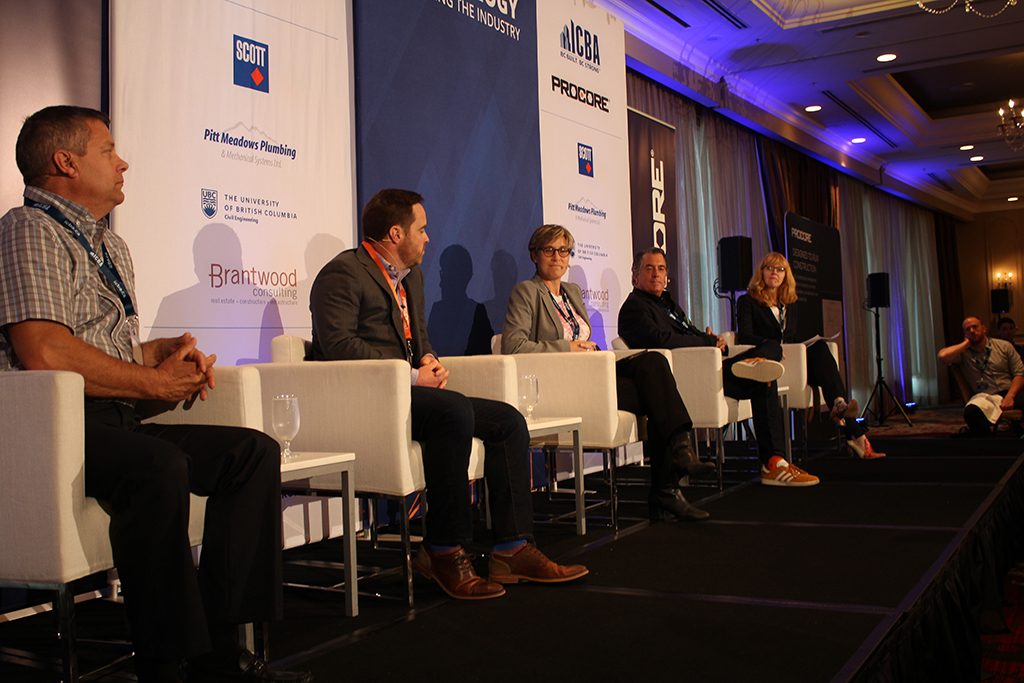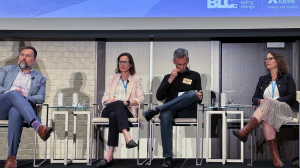VANCOUVER – Technology is not only changing the construction industry but shaping the increasingly important soft skillsets of tomorrow.
Participants at the Independent Contractors and Businesses Association’s “Construction Technology: Reshaping the Industry” panel, held recently at the Terminal City Club in Vancouver, said while new technology is finally permeating the industry, the transformation from analog to digital is still in its early stages.
“Most major sectors have done the analog to digital transformation and this industry is the last frontier for that transition,” Procore CEO Tooey Courtemanche said.
Courtemanche also pointed out “no industry has ever gone from digital back to analog, but the reason some industries don’t transform as fast is because change is scary.”
“But what’s really cool is that there are new ideas coming from everywhere on how to make construction more innovative, and those ideas are coming from people on the ground, not construction leaders,” he added.
Scott Construction president Darin Hughes said the industry used to resist adapting to change but recently a turning point has been reached leading to easier adoption of new technologies.
“We see this technological shift as an opportunity for the company to grow. It lets us implement change at the pace people want that change implemented,” Hughes said.
Pitt Meadows Plumbing owner Steve Robinson said the biggest factor to fomenting change is creating a culture where employees aren’t afraid to fail.
“We’re working with a diverse age group and if you don’t allow failure as the norm and speak to it every day as a leader, you have an organization where people aren’t excited about change,” Robinson said.
He added his company celebrates failure as an “everyday part of the process.”
“’I made a mistake, it was great and I never want to do it again.’ That’s when you get change,” he said.
University of British Columbia professor and Eng•cite program director Sheryl Staub-French pointed to construction’s lack of productivity as something that would be unacceptable in other industries.
“50 per cent of activities planned in schedules happen as planned. How would that look in our day if that happened to you personally? It’s really shocking we tolerate 50 per cent reliability,” Staub-French said.
“There’s so much opportunity to drive out waste and BIM and other digital tools that allow you to fabricate materials, bring them to the site and know it’ll fit. But you only get that if everyone is doing it, so we all have to look at how we can better collaborate,” she added.
Courtemanche also pointed out that until recently there were few opportunities for innovation in the industry.
“Everyone says construction doesn’t adopt technology, but before 2007 and the iPhone there was no technology to adopt. It’s a nine-year-old industry,” he said. “There was nothing to spend money on except enterprise resource planning solutions.”
“Now data has become everything and when you’re running a low margin business with no opacity and a lot of waste, there’s an opportunity if you look at the data,” he added.
“Technology has let us go into projects we wouldn’t have been able to do before. This is just the beginning and all these early systems allow us to start building on BIM and offsite fabrication to the extent we attract more people,” Robinson said.
Courtemanche said the way his organization and software are built lends itself to integrated project delivery (IPD) and collaboration but though new models and software are changing the industry, old habits are proving hard to break.
“’Hard bid’ doesn’t happen as much anymore but we’re still bringing in the practices we did back then,” he said.
Procore is also bringing its product to elementary schools and universities, he said, in order to widen the appeal of the industry to a new generation and to underrepresented groups.
“A larger portion of our customer testimonials are female now. Let’s elevate this for people who don’t see construction as anything but a guy’s job,” Courtemanche said.
“Technology is an HR strategy. There’s a stigma of a rough and tumble industry that doesn’t attract certain demographics,” Hughes said. “The number one thing our industry can focus on is drawing people in who are completely different.”
Staub-French will soon be taking on a role at UBC as associate dean of equity, inclusion and diversity and said construction has to “change the culture so the underrepresented feel included.”
“The home office is great for students, but once they get out in the field they find it’s not so great,” she said.
Staub-French also pointed out a new generation won’t tolerate older attitudes about social roles or about technology.
“The younger generation just isn’t going to tolerate the way we work. They’re a digital generation and they work differently, they’re used to figuring out workarounds compared to my generation saying ‘this technology just doesn’t work’,” she said.











Recent Comments